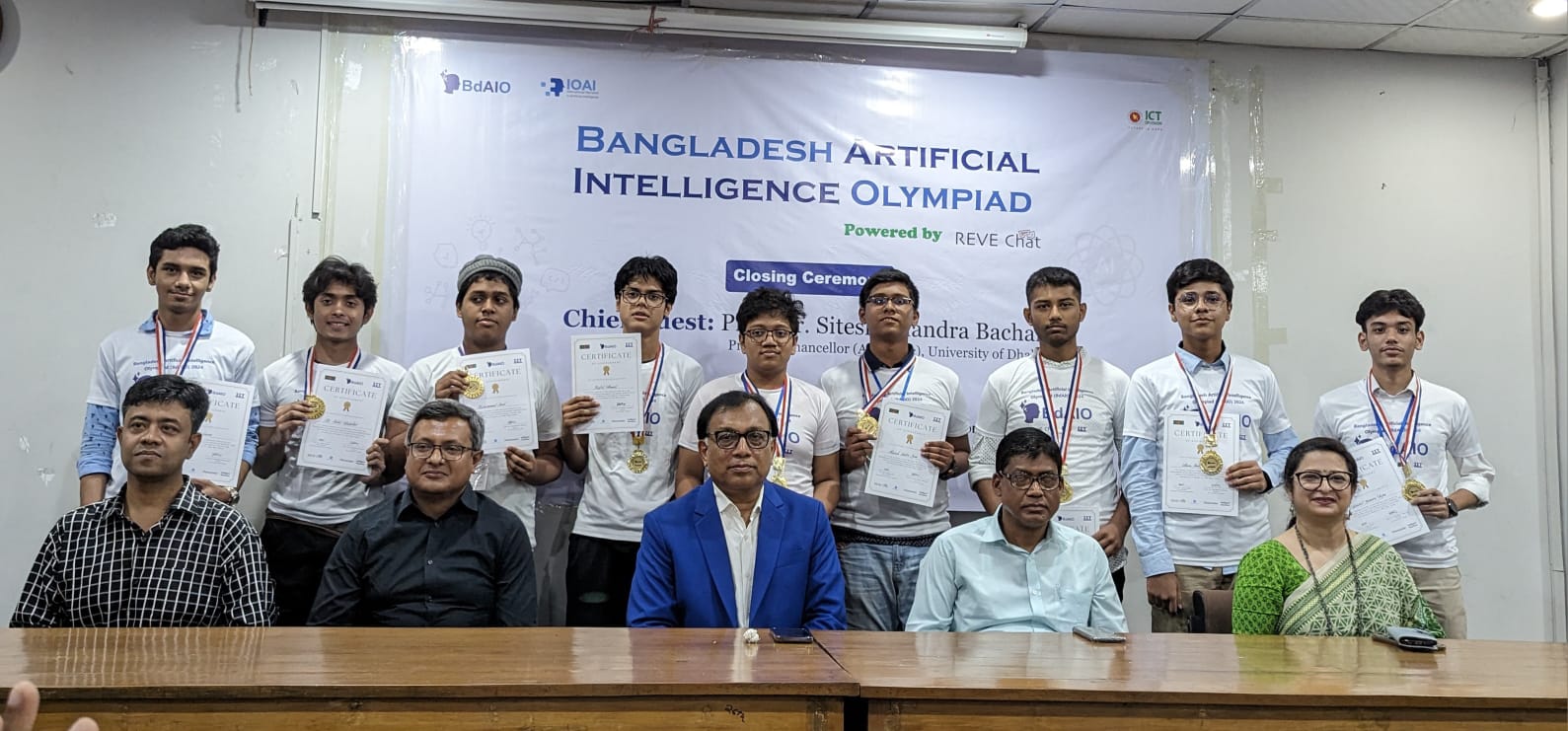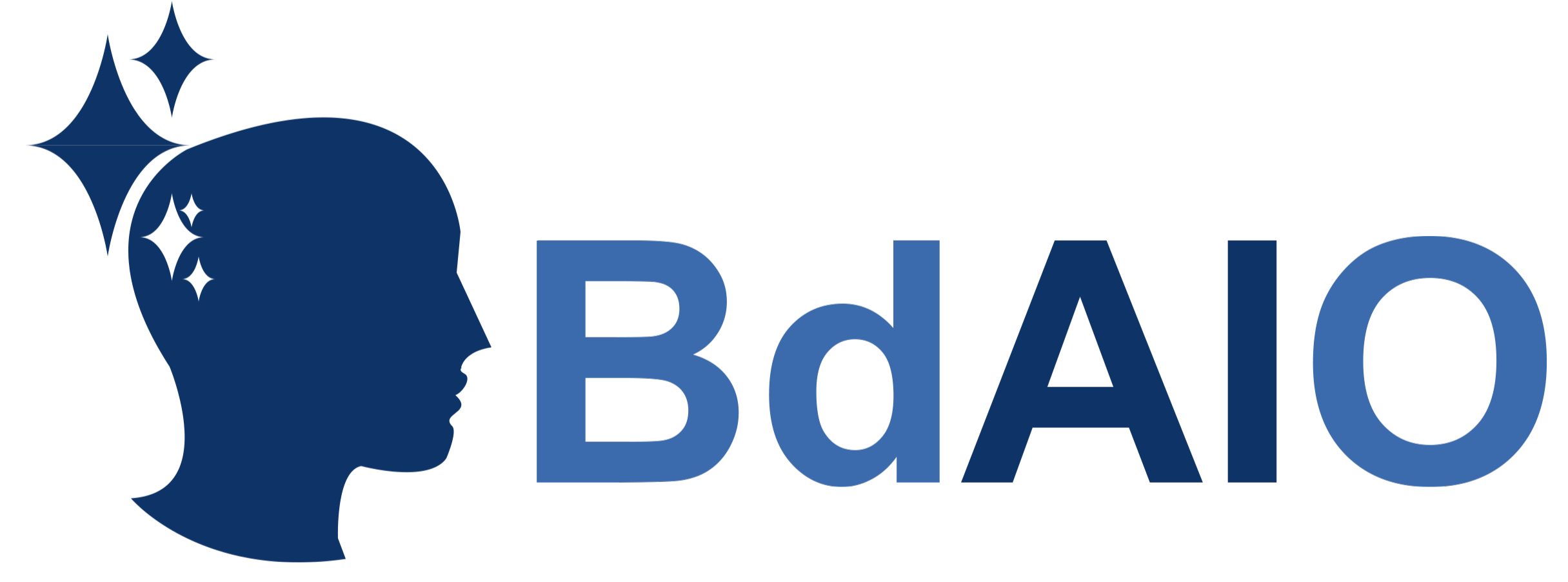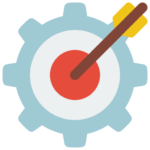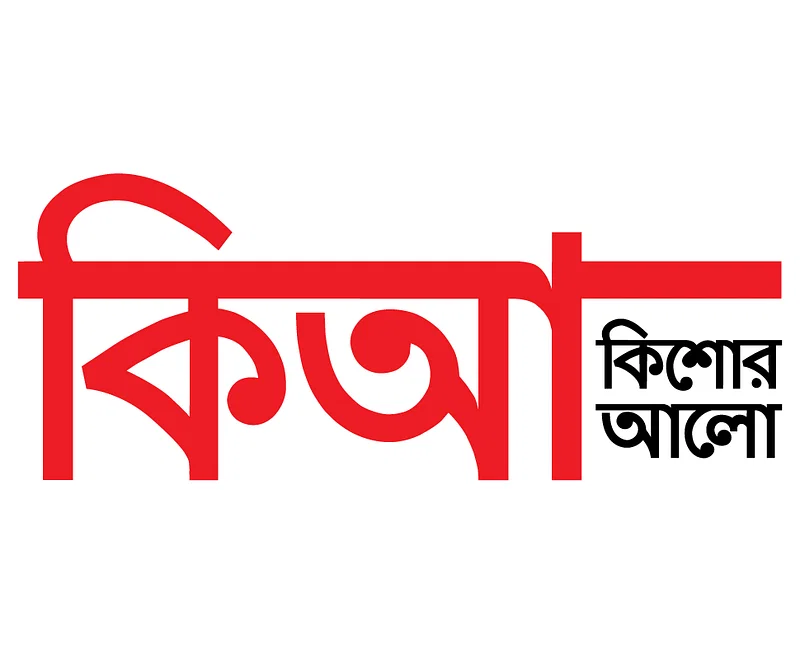

Bangladesh Artificial Intelligence Olympiad (BdAIO)
Welcome to the Bangladesh Artificial Intelligence Olympiad (BdAIO) for high school students! The First edition of IOAI will take place in Bulgaria from August 9th to August 15th 2024. And The national round of Bangladesh Artificial Intelligence Olympiad (BdAIO) will be held at the end of May 2024 (approximately). BdAIO is not just a competition—it’s a platform where innovation thrives and creativity knows no bounds. With a unique blend of scientific rigor and practical application, BdAIO challenges participants to push the boundaries of what’s possible in the world of AI. From cutting-edge research challenges to hands-on exploration of AI technologies, BdAIO offers an unparalleled opportunity for students to showcase their skills, ignite their passion for AI, and unlock the limitless potential of the future.
Format of The Olympiad
The International Olympiad in Artificial Intelligence consists of two rounds: a scientific round and a practical round.
In both rounds, the aim of the solutions is not necessarily to reach “the correct answer” as there may not be one. The scientific round is metric-oriented, as solutions are scored based on performance on a predefined task-specific metric. The practical round is conclusion-oriented, as participants have to design and perform experiments and to draw conclusions about the capabilities and limitations of AI.
Format of The Bangladesh National Olympiad
For the first time, the AI Olympiad is going to be held internationally. Bangladesh will send a team to this event. For this, the BdAIO will be held in Bangladesh in several stages.
The first stage will be an online Python programming contest on May 8, 2024. This contest will be open for students studying from grades 8 to 11. Those who perform well in this contest will be able to participate in the national stage. Since this is the AI Olympiad, problems can only be solved using Python. This contest will mainly test proficiency in Python and problem-solving skills. The contest will be held on toph.co. To register, you must have an account on that site.
All information about the Olympiad can be found on our Facebook page.

Notice
Winners of National Round
#NameInstitute1Abrar ShahidChattogram Cantonment Public College2Adib Bin KadirSouth Breeze...
BdAIO National Round
বাংলাদেশ আর্টিফিশিয়াল ইন্টেলিজেন্স অলিম্পিয়াড এর জাতীয় পর্ব অনুষ্ঠিত হতে যাচ্ছে আগামী ১৮ মে...
The final list of selected participants for the final round of Bangladesh Artificial Intelligence Olympiad 2024 has been compiled
The final list of selected participants for the final round of Bangladesh Artificial Intelligence...
Bangladesh AI Olympiad: Calling All Young AI Enthusiasts
Are you a student in classes 8 to 11 with a passion for AI and a knack for Python programming? If...
How to prepare
Teams at the IOAI will be expected to have knowledge of the following areas of AI, programming languages, and frameworks.
Python
Python is the main programming language used in the development of machine learning models. It is a high-level programming language, preferred by AI practitioners for its intuitive syntax and wide community support, among other things.
Check out a Python tutorial which uses Google Colab, an interactive computing platform, where you can execute Python code directly in a browser. Google Colab supports simple code like the one presented in the tutorial, as well as much more complex code for building and training machine learning models.
PyTorch
PyTorch is a widely used machine learning framework, based on Python. It provides high-level functionalities like building a machine learning model from pre-configured blocks, loading data from files of various formats, executing model training with just a few lines, and many more.
Notice that at the top of every tutorial page, there is a “Run in Google Colab” link that opens up the tutorial in Google Colab and allows you to interact with the code.
Machine Learning
While AI has evolved a lot in recent years, the fundamental principles of machine learning remain unchanged, so this course from 2018 is still a great resource. Focus specifically on lectures 1 through 5 and 11 through 13.
Deep Learning
Deep learning is what makes AI possible. This Coursera course from Andrew Ng and colleagues will give you the best introduction to the subject.
Once you’ve gained some skill with PyTorch (see below), also check out this interactive textbook on DL: https://d2l.ai/.
Natural Language Processing
The “Speech and Language Processing” textbook by Dan Jurafsky and James H. Martin is the Bible of NLP. Focus on Part 1.
Word Embeddings
This is a practical implementation of the word2vec algorithm you learn about in Chapter 6 of the textbook above. Word embeddings are a prerequisite for any machine learning performed over text. Use this tutorial to better understand the concept of word embeddings, and the use of Pytorch and Google Colab for building and training machine learning models.
Transformers
The main model architecture used in both text and image processing these days is the transformer architecture. It revolutionized the field of NLP because it is highly parallelizable and in that way able to consume much larger amounts of data than was ever possible before.
The main Python library for working with this architecture is called transformers and many existing models using the architecture can be found in the HuggingFace.co hub.
Generative Modeling
Generative AI is what really caught the eye of the public and brought AI into production overnight. This repository by Andrej Karpathy is a great practical introduction to the workings of generative language models.
Computer Vision
A course on deep learning for CV from 2015, good for getting a sense of the fundamentals in the field.
Recent Developments in CV
The Deep Learning 1 course here covers key concepts in recent CV research like ResNet, adversarial attacks and the vision transformer.


















